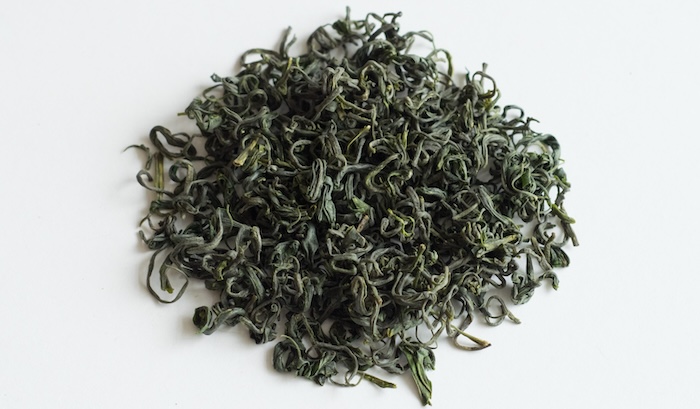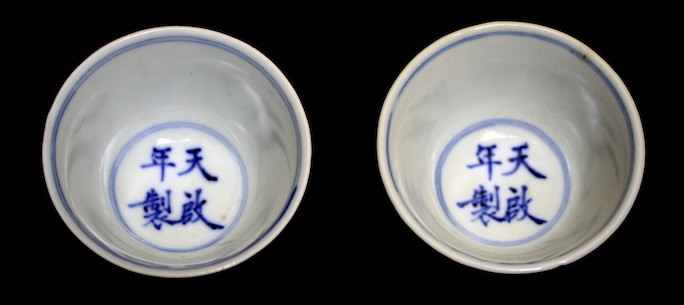SMOOSH JUICE
T

From about 1615 to 1620 in Shaoxing, China (just south of Shanghai), the Speckled Bamboo Shrine had a problem. A spring on the temple grounds had produced a fad among fashionable tea-drinkers in and around Shaoxing. The sudden demand for the spring’s waters impinged on the shrine’s ability to run its affairs. The situation generated trouble, and each trouble in turn is a great adventure hook for an RPG campaign that keeps returning to the same town.
This post is brought to you by beloved Patreon backer Colin Wixted. Thanks, Colin—you rock!

The trouble started with Zhang Dai. He was a scholar-gentleman, a member of the Chinese class of government officials and their relatives. For much of premodern Chinese history, government office was restricted to those who passed rigorous standardized tests, writing essays on prompts about the Chinese classics. The men who passed their exams and prospered bought land to lease and preserve their wealth. They raised their children in privilege and encouraged them to study the classics too. Many scholar-gentlemen didn’t even try to take the exams, but just focused on scholarship and—critical for our story here—aesthetic considerations.
Zhang Dai wasn’t an official, but he was a well-educated aesthete from a decent family. He had highly cultivated tastes in literature, history, art, music, food—and tea! In 1614, Zhang (the first name is the family name) stopped at the Speckled Bamboo Shrine. He tasted the water of the spring and was startled by the bitter tang of phosphorus. He wondered how tea made from this water might taste.
He took his discovery to his uncle, Zhang Sanshu. Together, they experimented until they developed a recipe they felt produced remarkable results. You took water from the spring at the Speckled Bamboo Shrine. You let it sit for three days, so the gases effervesced out. You boiled the water in the finest white porcelain, then mixed the hot water with some other water from the same spring that had already been boiled and let cool. You added this water to green tea leaves of a particular variety, with which you included two jasmine petals. Zhang Dai named the drink “Snow Orchid tea.”

Zhang shared his Snow Orchid tea in his fashionable circles. It became popular: a fad. Zhang made Snow Orchid cheese by integrating the tea into the cheesemaking process. He made Snow Orchid wine, fermented soybean snacks, candies, vinegar, rolls, and fritters. By 1620, the Snow Orchid “brand” was the most popular tea varietal among the scholar-gentlemen of Shaoxing.
From there, Snow Orchid’s popularity spread beyond Zhang’s refined orbit. Regular people started making tea with the Speckled Bamboo spring water. They didn’t have Zhang’s secret Snow Orchid tea recipe, but they didn’t really need it. Tea shops sprang up around the Speckled Bamboo Shrine, and their customers seemed to enjoy knockoff Snow Orchid tea just fine.

This was where trouble began for the monks. First, they suffered the problem of any nice spot ruined by Instagram. More and more tea shops and wine shops opened in and around the shrine. The place got crowded. It lost its special appeal.
Then a corrupt official claimed the spring for himself. He sealed it off so no one else could get to it. It’s not clear whether he did this to corner the market on Snow Orchid and make money, whether he did it so everyone would want to come to his parties since he alone had Snow Orchid tea and wine, or some combination thereof.
The monks got their spring back, but the corrupt official’s stunt made the Snow Orchid brand even more famous! Crowds gathered at the shrine to try the water. They demanded hospitality from the monks. That wasn’t unreasonable (they had come all this way, after all), but the crowds were just too big for the shrine to supply everyone with food and firewood. Some of those denied their handouts brawled with the monks.
So the monks filled the spring with manure. Nobody would want the spring water if it was fouled, right? Of course Zhang Dai objected. Snow Orchid tea was his thing and these selfish monks were getting in his way. Three times he brought his servants to the shrine to clean out the spring. Three times the monks fouled the spring again as soon as he left. Finally, Zhang gave up.
Even after the manure, some unrefined folks were still interested in Snow Orchid drinks. After all, to make tea you have to boil the water. And if you make wine, it has alcohol in it, so it’s safer to drink than regular old sewage. Even though the monks did their best to tamp down interest in Snow Orchid, some of the tea shops and wine shops remained after the manure-ing.

At your table, the successive problems faced by the Speckled Bamboo monks are really fun little adventure hooks. If you’re running a campaign that’s going to keep coming back to the same town, you can put a shrine in it that you base on the Speckled Bamboo shrine. (Sorry, I wasn’t able to turn up anything else on the shrine, even what religious tradition it was affiliated with. This was right before the Manchu invasion when a lot of stuff went sideways in China.)
The first time the PCs visit this town, they see that the Speckled Bamboo shrine seems to be the happening place to be! Maybe when the PCs carouse, you say they do so in the wine-sinks around the shrine, and they eat fun Snow Orchid fritters and stuff. Maybe the monks approach the party to ask help corralling some drunken revelers who are interrupting important shrine business.
The second time the PCs come to town, the tea shops and wine sinks are shuttered because a corrupt official has sealed off the spring. The monks ask the party’s help to get back full use of their monastery.
The third time the PCs come to town, there are rowdy travelers demanding handouts from the monks. The monks ask the party’s help with this little problem too.
Finally, the fourth time the PCs come to town, a fictionalized version of Zhang Dai has ordered his servants to clean the spring of the manure the monks keep putting in it. The monks ask the party to intercede on their behalf and convince Zhang to stop doing this.
None of these “adventures” are very long. Each probably takes an hour or less to play at the table. What they do is build a consistent sense of place. The world changes, but is recognizably the same week after week. It gives the players a sense of ownership over this fictional town: “Oh, that’s the town where we keep helping the shrine. We like that shrine.” And it gives you a chance to introduce NPCs like the corrupt official and Zhang Dai who can come up in later adventures. When you introduce little NPCs like those two, in later adventures when you need, say, an officer or a wizard or something, you can have the officer be the corrupt official from earlier, or have the wizard be Zhang Dai. That way the party starts that adventure already having a relationship with one or two of the adventure’s major NPCs.

Make sure you don’t miss a blog post by subscribing to my no-frills, every-other-week mailing list! I also have a signup that’s only for big product releases!
Looking for material for your game tonight? My back catalog has hundreds of great posts, all searchable and filterable so you can find something from real history or folklore that fits exactly what you need!
Come follow and chat with me on social media! On Bluesky, I’m @moltensulfur.bsky.social. On Mastodon I’m @MoltenSulfur@dice.camp.

A book I spent two years working on is now available for pdf sale! The American Crisis: War in the North is a 350-page setting book and collection of adventures for Nations & Cannons, a historical RPG set in the American Revolutionary War. It’s exhaustively and lovingly researched, and spotlights the adventures of (real!) Black, Brown, female, and queer revolutionaries. Play as spies, skirmishers, and saboteurs in this historically-grounded RPG based on the 5e rules set.
